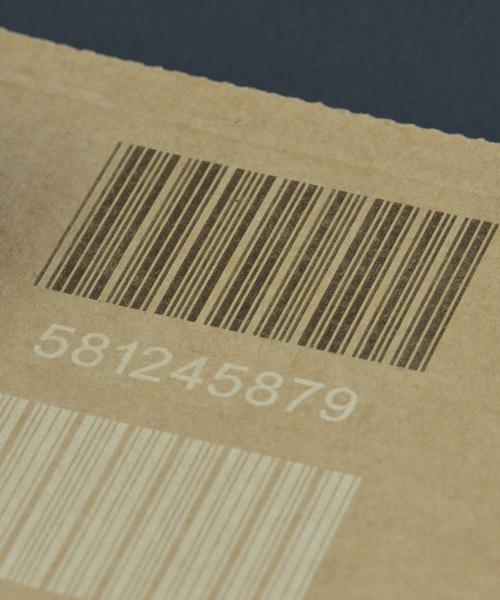CO2 laser engraving is a cutting-edge technology used in various sectors, including object personalization, signage, and industry, while cutting is used in the creative and signage fields. Using a carbon dioxide-based laser beam enables precise, detailed engraving and cutting of many organic materials.
What are the two systems in CO2 laser technology?
CO2 laser technology uses a laser beam generated by electrically exciting a CO2 gas mixture. This infrared beam is then focused to engrave or cut the material. Two processes are used for this purpose.
- The galvanometric system: a set of mirrors and lenses directs the beam onto the surface to be engraved. This process is ideal for work requiring high precision and speed and is often used for small surfaces.
- Gantry system: a system that allows the laser beam to move on a moving frame. This technology is ideal for applications requiring a larger working area or high precision over a longer distance.

The CO2 laser engraving process
When the CO2 laser beam comes into contact with the material to be engraved, it vaporizes it in a controlled manner. The molecules absorb the laser's energy and change from solid to gas, creating permanent marks.
The precision of this engraving depends on several factors:
- The oscillation of the light,
- Power,
- Speed of movement,
- Exposure time.
Laser engraving vs. laser cutting While laser engraving removes material without passing through the object, laser cutting uses an amplified beam to melt (fusion principle) or vaporize the material entirely, thus passing through the material. |
|---|
When to use CO2 laser engraving?

CO2 laser engraving
Applications
- Personalizing objects: cutting boards, pens, glass, bottles, cans, perfumes, etc.
- Signage: road signs, information panels, identification tokens and labels, cables and pipes, signs and displays, etc.
- Industry equipment: equipment identification plates, car headlights (plastic), glass or transparent plastic medical bottles, measuring glasses, and transparent plastic containers (chemistry)...
CO2 laser engraving machines can be used to produce complex shapes, small drawings, images, or texts with high precision, as well as barcodes, Datamatrix, batch numbers, and alphanumeric codes for part traceability...

CO2 laser engraving
Materials
CO2 laser engraving machines can be used to personalize various types of objects and for specific industrial applications. Many organic and synthetic materials can be engraved:
- Organic: wood, cardboard, paper, leather, rubber, glass, stone, ceramic, rubber, fabrics...
- Synthetic: plastic, silicone...
However, it is unsuitable for engraving metals unless they are anodized or a specific product, such as Metal Marker G, is used to achieve a chemical reaction.
When to opt for CO2 laser cutting?

CO2 laser cutting
Applications
From design to execution, including cost optimization and low operator intervention, laser cutting offers many advantages.
It stands out for its precision and versatility, enabling materials to be cut to create customized items and complex shapes. This opens the way to a wide range of applications, such as POP and signage (displays, advertising signs, etc.), as well as part identification and traceability!
The little extra: the laser cutting machine is self-contained, requiring no consumables or additional tools (stylus, blade, chemical product, etc.).

CO2 laser cutting
Materials
CO2 laser cutting can be used to create customized objects or signage elements. It is particularly suitable for cutting:
- acrylic,
- plexiglass,
- plastics,
- organic materials (leather, paper, wood, etc.).
CO2 laser facts While CO2 lasers can cut wood and acrylic components, some materials, such as aluminum, cannot be cut due to their reflectivity. Materials like PVC are hazardous to health for cutting or engraving and can damage the laser machine. |
|---|
Gravotech's CO2 laser engravers & cutters
Laser tables are class 2 machines that ensure safe use in all environments, with no special authorization required.
They are ideal for precise engraving (or cutting) on small objects or large parts.
The LS900 is ideal for batches while the LS100 is perfect for unit engraving & cutting.
Small CO2 laser engraver and cutter for personalization, signage and creative.

LS100
Medium CO2 or Fiber laser engraving and cutting machine for signage and small series.

LS100EX
Large laser engraver and cutter that can do everything.

LS900
Laser stations are Class 2 machines, ensuring safe use in any environment without special authorization. They are designed for highly precise single-part engraving, perfect for applications demanding exceptional accuracy.
Gravotech offers a range of CO2 laser engravers in the form of laser stations: the WeLase, a compact solution for all types of engravings; and the LW2, a medium-sized fully automated laser station.
Integrable laser markers are Class 4 machines designed for industrial environments, ensuring part traceability. These CO2 laser engravers can be integrated into production lines for fast, precise marking. Gravotech’s CO2 integrable laser markers are perfect for marking organic materials, offering high-quality wood, leather, and more results.



